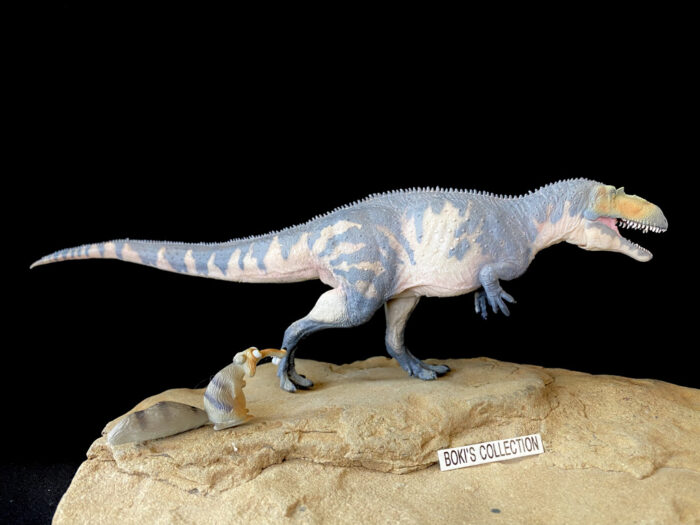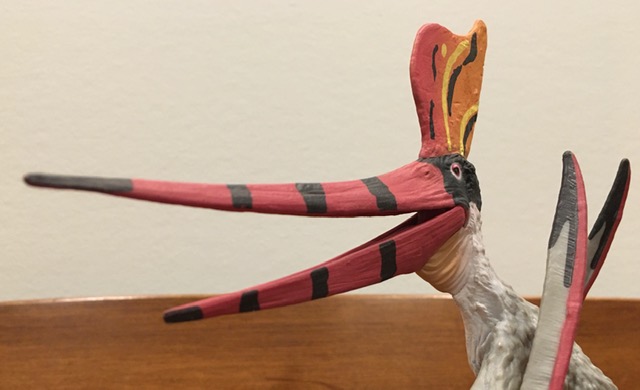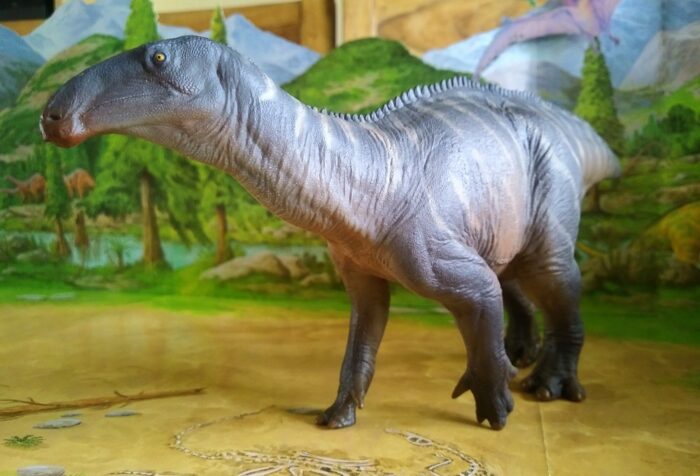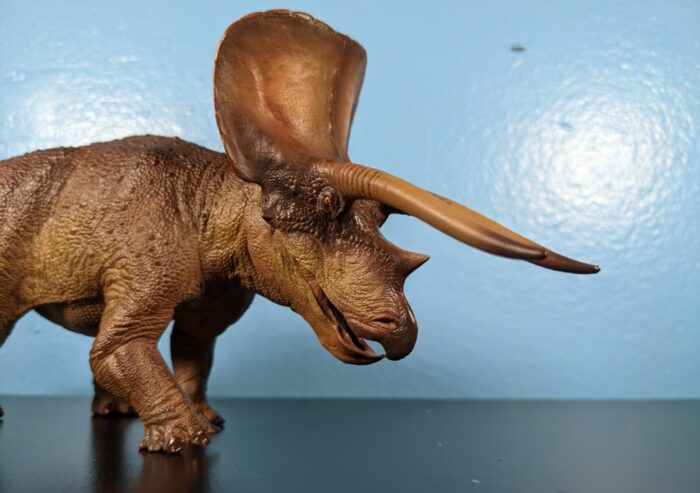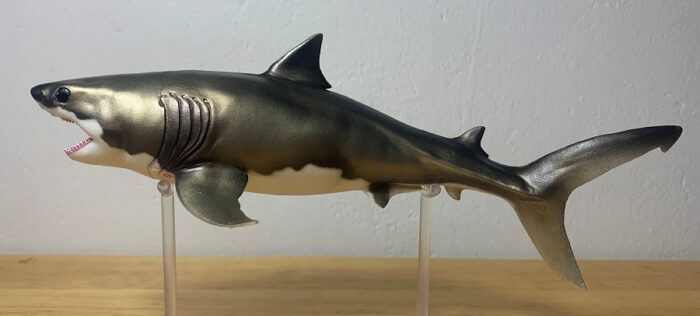When it comes to large predatory theropods, it’s hard to figure out what exactly makes some genus/species popular while others not so. It’s not just the size or the active predatory lifestyle that propel certain species into stardom, in fact there are many equally large and fearsome theropods that despite seemingly having all the star quality, somehow languish in obscurity.Take the subject of our review today, Torvosaurus, a large apex theropod predator that despite having it all, even a catchy and easy to remember name, still ranks as one of those “obscure” names, failed to garner fame outside of the paleo world.
Type: Figurine
Review: Pteranodon sternbergi (CollectA)
Review: Tyrannosaurus rex (Dinoland by Sinclair)
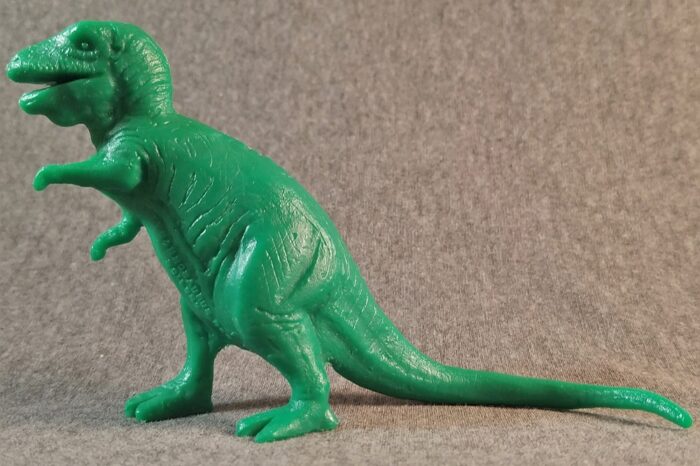
Sinclair’s unique figurine was probably one of the finest renditions of the tyrant lizard king a child could ever hope to own in 1964, and remains a delightful piece of vintage memorabilia to this day.
In 1933, in conjunction with the Chicago World’s Fair, Sinclair Oil company commissioned an exhibit of life-sized dinosaur models for display.
Review: Baluchitherium (Paraceratherium) (Lido-Nabisco)
Review: Tylosaurus (PNSO)
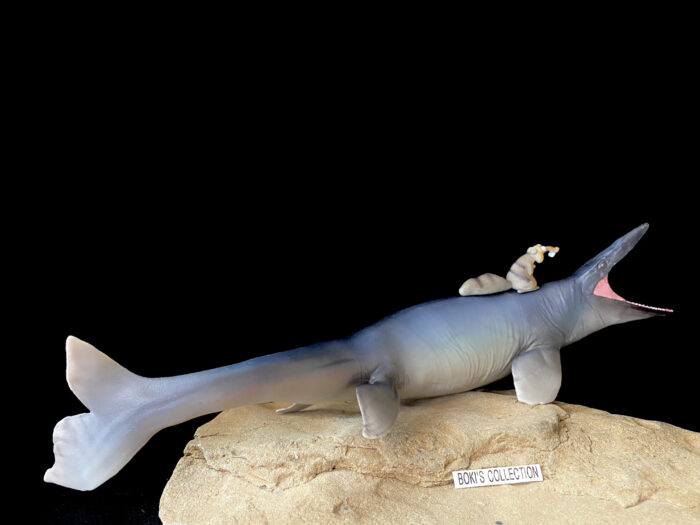
The vast inland sea known as the Western Interior Seaway of the Late Cretaceous split the continent that we would come to know today as North America from north to south. As the landmasses on either side were ruled by dinosaurs and other terrestrial animals, this inland sea was ruled by huge marine reptiles.
Review: Iguanodon (PNSO)
Review: Triceratops (2021)(PNSO)
Review: Megatherium (Marx)
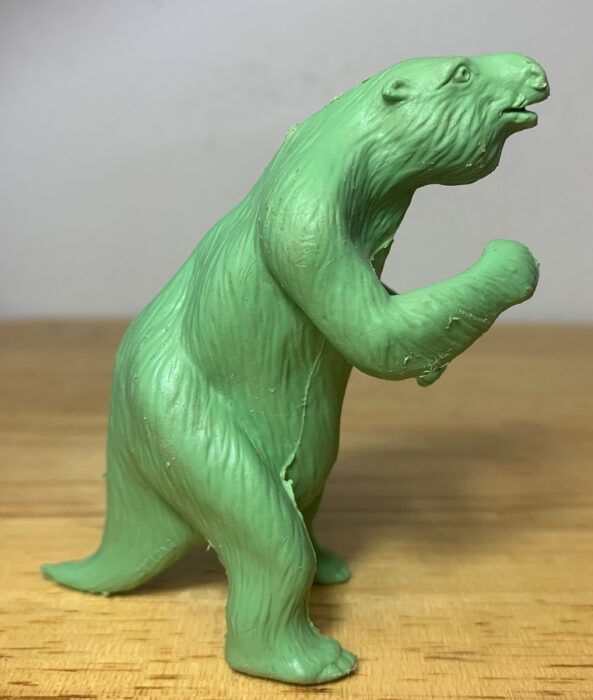
Before we begin with the review, I want to ruminate on some things, because this review is significant in a couple of ways. For one, it’s my 200th review for the Dinosaur Toy Blog. I’ve known it was coming for some time now and over the course of several months deliberated over which figure should be selected for the occasion.
Review: Allosaurus (Happinet)

Of all the theropods of the Jurassic period, the most well known is the Allosaurus, and for good reason. Measuring 9.7m long, there were few other predators that stood a chance, with the exception of Saurophaganax. This got it starring roles in a lot of dino media, being the original big dino predator.
Review: Pteranodon (Happinet)

Of all the vertebrates on earth, only three in the history of life have achieved powered flight. Two, the birds and bats, are still amongst us today, but the third, the pterosaurs, have long since become extinct. This makes them an intriguing group, especially given that some reached incredible sizes.
Review: Edmontosaurus (Deluxe by CollectA)
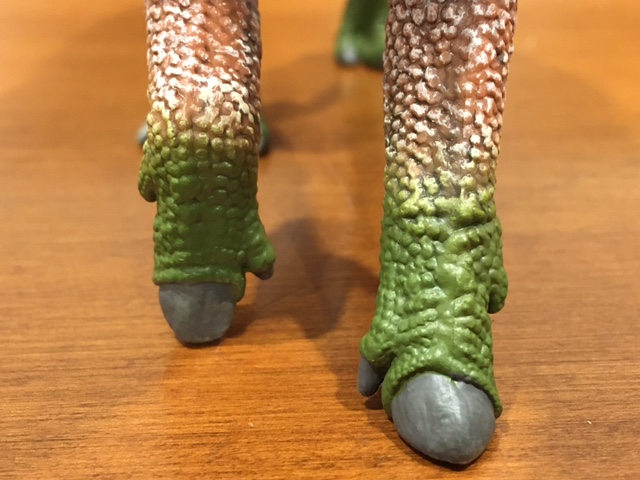
The two valid species of the North American hadrosaur Edmontosaurus, E. annectens and E. regalis, are known from multiple fossil specimens. Taken together, they make the genus “fully known.” But while a complete skeleton can give us a reasonable idea about an animal’s appearance in life, it is not necessarily a full or accurate one.

